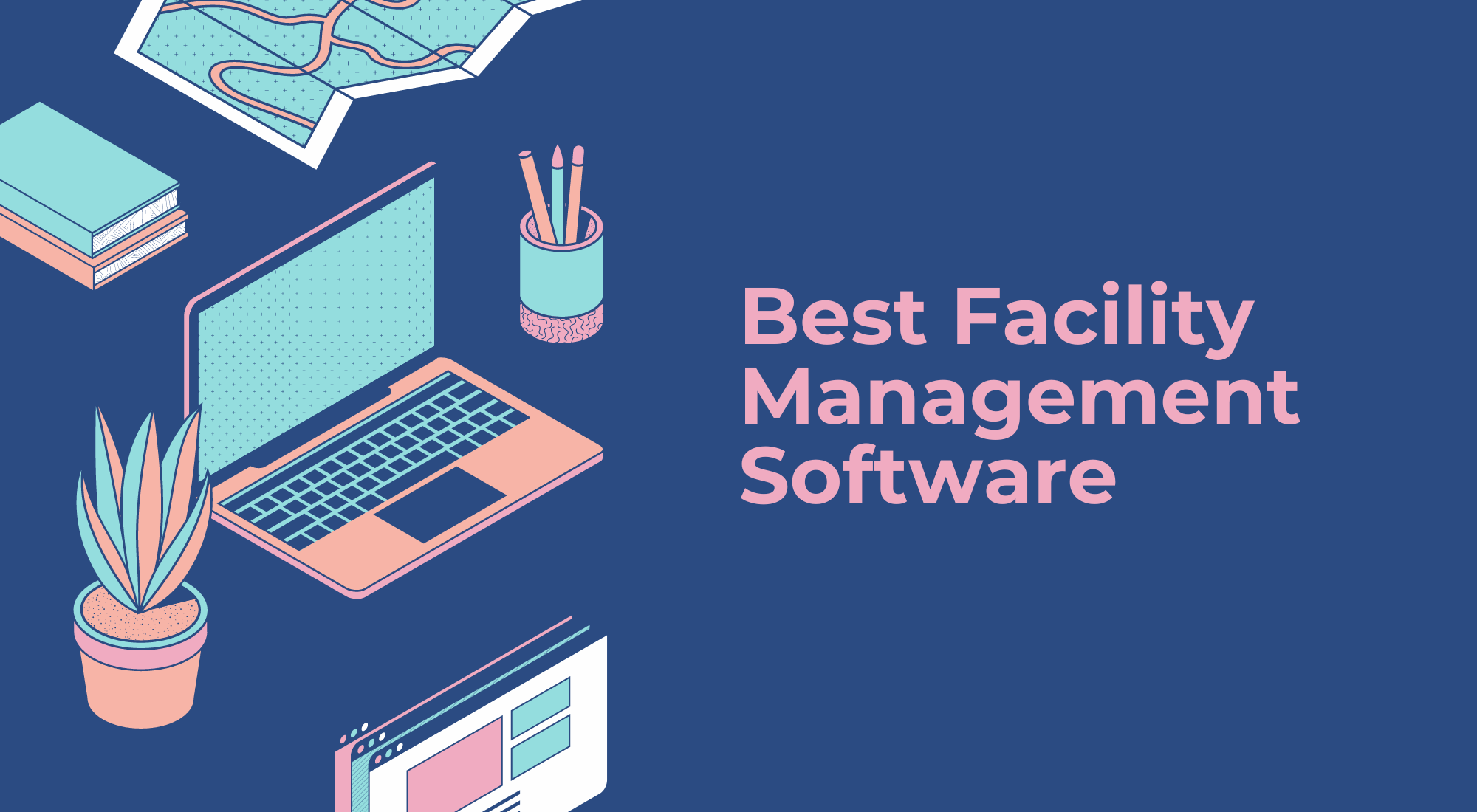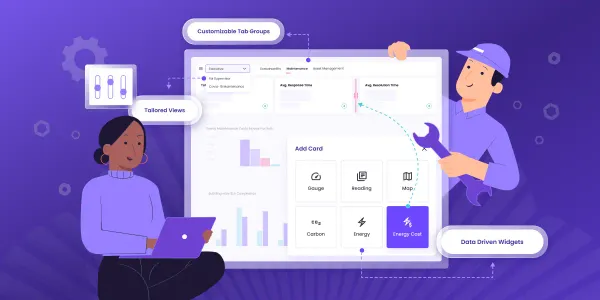Facility service management is evolving from task-based outsourcing to integrated, tech-driven strategies. This guide covers hard and soft services, the rise of IFM, challenges with legacy systems, and how modern CMMS solutions are enabling smarter, scalable, and more sustainable operations.
In the past, facility service management outsourcing was all about handling specific tasks like maintaining elevators or HVAC systems. Then, we moved to bundling services together.
Now, the trend is shifting towards integrated facility management (IFM), which offers more value by streamlining operations and cutting costs.
But here’s the catch: property owners are looking for more than just cost savings. They want quality service, transparency, reliable reporting, and a focus on sustainability.
To stay competitive, FMSPs (Facility Management Service Providers) must adopt forward-thinking technologies to become strategic partners who actively contribute to wellness, decarbonization, and net-zero goals.
The big question is: Can IFM service providers meet these expectations, especially when dealing with outdated systems and manual processes?
What is facility service management?
Facility service management refers to services and processes that ensure the functionality, comfort, safety, security, and efficiency of buildings and their surrounding infrastructure.
According to the ISO's definition,
Different sectors, such as commercial real estate, education, government, residential buildings, and healthcare, invest in facility service management to support their organizations' goals and core activities.
Different sectors, such as commercial real estate, education, government, residential buildings, and healthcare, invest in facility service management to support their organizations' goals and core activities.

Types of facility service management
There are two types of facility service management: hard and soft. Let's explore each in detail and discuss their benefits.
Hard facility service management
Hard facility services are non-negotiable, mostly mandated and legally required by the government to ensure safety and security. These services cater to the physical assets of buildings like plumbing or keeping the air conditioning going.
Some common examples of hard services in facility management include:
- HVAC systems
- Lighting
- Building maintenance
- Fire safety services
- Gas and heating services
- Plumbing and mechanical services
- Electrical systems
Benefits of hard facility service management include:
- Reducing operational costs and inefficiencies by taking a preventive maintenance approach
- Running operations without interruptions and unplanned downtimes and ensuring tenant satisfaction
- Reducing accidents, ensuring occupant safety, and increasing productivity
- Ensuring compliance with industry regulations like OSHA, EPA, LEED, and ISO, and preventing legal issues, penalties, and fines
- Increasing an asset’s lifespan, reducing operational expenses and ensuring asset availability.
Soft facility service management
The soft services side of facility management is all about making sure buildings are safe, clean, and pleasant to be in. This includes a range of services like cleaning, laundry, catering, vending, security, landscaping, mail handling, waste management, and even hospitality services.
Soft services include:
- Pest control
- Waste management
- Janitorial services
- Interior and exterior decorations
- Security systems
- Catering
- Grounds management
- Parking spaces management
- Post and mail management
Benefits of soft facility service management include:
- Protecting the immediate and surrounding environment by managing waste properly
- Enhancing the aesthetics and visual appeal
- Improving productivity and efficiency by providing a safe, secure, and comfortable environment to work
- Making occupants feel valued, even if it doesn’t have an immediate business impact
What is integrated facility management (IFM), and why is it gaining popularity?
Facility management has come a long way from its early days of outsourcing specific tasks like HVAC maintenance or elevator repairs. Today, more and more organizations are opting for integrated facility management (IFM), where a single provider handles multiple services under one umbrella.
Why? Because it streamlines operations, cuts costs, and brings everything under one roof.
This shift towards IFM isn’t just about saving money—it’s about enhancing service quality, transparency, and compliance. Companies are realizing that managing multiple service providers is inefficient and time-consuming.
The challenge for IFM providers is to continually demonstrate value. Once companies experience the initial cost savings, they expect even more. They want service providers who can not only match industry standards but also keep up with evolving expectations and technological advancements.
Here are some factors that make property owners choose IFM over traditional facility management services:
A safe, secure, and healthy place for occupants
IFM ensures a healthy, convenient, and secure environment for occupants by increasing the asset’s uptime with preventive maintenance, ensuring cleanliness with sanitation protocols, and enhancing the visual appeal with interior and exterior decoration. This boosts occupant’s productivity and maintains optimal health, reducing absenteeism and achieving efficiency.
Advanced analytics and unlocking insights
Integrated facility management (IFM) uses AI, machine learning, IoT, and even augmented and virtual reality to gather real-time data from sensors all around the building. By analyzing this data, IFM can spot trends and provide valuable insights.
This helps facility managers and FMSPs stay one step ahead with proactive maintenance, keeping everything running smoothly and avoiding any unexpected downtime.
For example, IoT sensors deployed throughout the buildings and systems can monitor data, track asset performance metrics, and analyze occupancy rates. This will help adjust HVAC, lighting, and refrigeration systems to reduce energy wastage and enhance occupant comfort.
Enhanced decision-making
With one facility service provider, there is no more juggling between multiple contractors and suppliers or back-and-forth conversations. Strategic decision-making becomes quicker, more efficient, and easier, avoiding delays in maintenance and ensuring uninterrupted service.
Improved compliance and risk management
Another reason why IFM is preferred is that it helps ensure compliance with regulatory standards by efficiently screening vendors, confirming their licenses, and maintaining accurate and updated records. This improves risk management and prevents legal penalties and fines.
Streamlined operations
What if facility managers need to relieve themselves from routine tasks, save time, and focus more on revenue-saving tasks?
IFM streamlines property operations by leveraging technologies to automate repetitive and time-consuming tasks such as warranty flagging, work order management, scheduling preventive maintenance tasks, invoice processing, asset tracking, etc.
This enhances productivity and operational efficiency, freeing up and empowering your teams to focus on strategic and organizational tasks.
Reduced operational costs
IFM services under one provider significantly reduces costs, as tracking budgets and expenses becomes much easier. This provides transparency into expenses and uncovers cost-saving opportunities.
Also, operational efficiency, effective resource allocation, utilization, and sustainability are additional benefits of IFM that contribute to reduced costs.
Improved response time
Struggling to coordinate and allocate technicians to complete issues raised by tenants?
IFM improves response time by automating work order creation and routing them to appropriate technicians based on availability.
Technicians can access the request through the mobile app and proceed further to complete tasks. This way, service requests are addressed on time, improving tenant satisfaction and safety.
When done right, an IFM can deliver some fantastic outcomes for FMSPs and property owners:
- Shift to a holistic approach by streamlining your existing tech stack, allowing you to manage everything from a single dashboard.
- Quickly roll out services for new clients with standard requirements, making onboarding a breeze.
- Reduce development efforts and speed up time-to-market for custom client needs or specific service lines.
- Keep track of key metrics and performance indicators in real-time, providing clear visibility and actionable insights across all client portfolios.
- Empower teams to respond swiftly to property management needs and collaborate efficiently, no matter what device they’re using.
- Easily expand to include new business lines and digital initiatives without a hitch.
- Standardize service delivery and manage all business processes from a scalable, robust, unified SaaS platform
All of these outcomes are possible if we rethink how we approach facility service management and the rapidly evolving roles of facilities operations and maintenance (O&M) teams and go beyond manual workflows and legacy tech.
Where IFM stands today and how legacy tech holds FMSPs back
The key to implementing IFM successfully is using technology like computerized maintenance management systems (CMMS) or CaFM and IoT devices that allow for real-time monitoring and more efficient maintenance.
A CMMS or CaFM is central to all operations and maintenance activities, playing a crucial role in the success of your IFM strategy. It's essential to choose a CMMS that integrates seamlessly with your existing systems and software, offering a complete, real-time overview of all your assets across the portfolio.
Here's what’s stopping FMSPs from becoming an indispensable partner for property owners:
Internal inefficiencies
Legacy CMMS was built for technicians, but now stakeholders expect value, operational visibility, and seamless communication from the ideal facility service management solution.
For instance, technicians need to access equipment data for manufacturer recommendations and safety plans to mitigate accidents. Tenants need a user-friendly service portal to request services, track maintenance operations, and leave feedback and reviews.
Property owners expect visibility into all reports and data every month, e.g., number of tickets raised, surveys, etc.
However, legacy CMMS has not evolved enough to meet the dynamic needs of modern facility service management and is not end-customer driven.
Lack of centralized facility operations
Legacy CaFM or CMMS are limited to data storage and asset maintenance and management. Budgeting, ticketing, maintaining compliance, managing contractors, collaborating with technicians, and procuring spare parts are done outside the traditional CMMS system.
Legacy CMMS or CaFM can’t centralize operations and maintenance, making it difficult to efficiently manage multiple sites from a single platform.
Lack of interoperability, leading to missed opportunities
Legacy CMMS fails to integrate with existing point solutions and automation systems, creating data silos, thus making it impossible to derive insights from valuable information.
Imagine a client is looking to reduce energy consumption across multiple sites to save costs and ensure compliance. Legacy CMMS cannot consolidate, track, and analyze data that is dispersed across different systems, such as BIM, asset data repositories, and BAS.
Rigidity and not automatable
Legacy systems have complex interfaces and outdated features, making it difficult for users to use and complete operations. Additionally, configuring workflows according to the client's requirements can be complex, delaying project kick-offs and leading to dissatisfied clients.
Any customization is either impossible or, at best, expensive and time-consuming.
Legacy CaFM are heavily labor-reliant. It’s not uncommon for O&M teams to have individuals whose sole job is to enter data into the system, update status, and close tickets—all manually. It doesn’t allow for intelligent and intuitive automation.
Improper implementation further compounds challenges, forcing facilities to adapt their workflows to accommodate system limitations. For IFMs, managing multi-site portfolios for various clients, this scenario quickly escalates to an absolute nightmare.
Lack of scalability
Today’s real estate industry is highly dynamic. Especially since the pandemic, customers/tenants want the flexibility to rent for shorter durations or use as they need.
Property owners too want to charge dynamically, offer value-added services and scale the portfolio based on business needs. But legacy CMMS is too stuck in old-world models to allow for the hassle-free addition of new service lines and for exceptional service delivery.
Podcast: Listen to this Facilio podcast where Sangeetha B, Deputy CEO, Al Fajer FM, talks about how legacy CaFM is a setback to the modern facilities experience.
Facilities have changed their operations to fit the constraints of legacy CMMS systems, and not the other way round. As a result, this fragmented and disjointed state of operations tech ends up creating more silos, work, and frustration for all stakeholders.
This one-sided, almost myopic approach hampers progress, stifles innovation, and holds FMSPs back by blinding them from insights and tying them down with reactive firefighting.
A paradigm shift in facility service management
Now, imagine a world where you can control end-to-end facility operations and maintenance, communicate effectively with internal and external stakeholders, integrate with existing systems, make informed decisions, and automate mundane tasks using a single centralized platform.
That’s where a modern, connected CMMS or CaFM can help bring your IFM vision to life. It’s comprehensive, flexible, and friendly enough to integrate with all your existing systems to create a truly connected O&M ecosystem.
It digitizes, centralizes, and automates processes to help you achieve outcomes like increased asset uptime, quicker response time, and lower operational or capital expenditure.
A modern, connected CMMS or CaFM solution helps FMSPs stay ahead of the crowd and become strategic partners to their clients by contributing to the client’s goals, including sustainable facility management and operational efficiency and transparency.
By using a connected CMMS or CaFM, FMSPs become more competitive, offering faster, more efficient and high-quality services to their clients. Quick, seamless implementations & integrations mean you expand into new markets effortlessly, driving cost-effective growth and increasing their market presence.
Here’s how:
- Zero missed opportunities: With automated workflows, every service request, inspection finding, or system alarm triggers an automated response, ensuring nothing falls through the cracks..
- Empowered clients and tenants: A user-friendly portal and mobile app puts them in control, allowing them to submit requests, manage visitors, and stay informed every step of the way.
- Streamlined vendor collaboration: Give your vendors the tools they need to deliver faster, more efficient service.
- Data-driven decisions: Unlock a treasure trove of data to identify trends, optimize preventive maintenance, and make informed decisions that drive profitability.
The result?
- Real-time visibility: See what's happening across your entire portfolio, at any time, from anywhere.
- Proactive issue resolution: Address problems before they escalate, minimizing downtime and maximizing client satisfaction.
- Optimized operations: Streamline workflows, reduce costs, and boost efficiency across the board.
- Exceptional service delivery: Exceed client expectations and build a reputation for excellence.
With this workflow automation, FMSPs can save time, improve efficiency, and focus on revenue optimization tasks.
Engage stakeholders within CMMS or CaFM
A connected CMMS or CaFM unites every stakeholder involved in the property operations and provides user interfaces for all roles, including technicians, property owners, facility managers, occupants, tenants, office employees, vendors, and contractors.
Moreover, stakeholders can seamlessly switch between mobile and desktop applications, bringing complete visibility into operations, driving engagement, and improving internal collaboration.
Imagine tenants residing in a property that requires plumbing services. They can easily use the service portal to share issues and request services. The CMMS or CaFM will immediately generate work orders and notify technicians, who can access them using their mobile apps.
After completing the tasks, field technicians can swiftly share images, update status, and complete documentation using the same device.
Ditch manual facility management for automated processes and save time
How about consolidating property operations and automating tasks involved along the operations lifecycle?
A connected CMMS overcomes facility service management challenges and automates several mundane tasks, including work order generation, routing, and approval, notifying technicians, closing work orders upon completion for recurring tasks, sending alerts, and generating reports and dashboards.

Enable fully connected operations
Confused about whether you should start from scratch and replace your entire existing tech stack to adopt the new solution?
You don't need to replace existing systems; you can integrate them with the new platform. A connected CMMS uses an API-first approach to offer seamless integrations with BIM, BMS, sensors, and third-party business software applications.
You can easily connect different systems, democratize information access, and gather real-time data to optimize processes.
Quick deployment and lower development efforts
A connected CMMS requires only minimum development efforts, and you can quickly deploy the platform for clients with custom use cases.
It also offers the flexibility to configure and automate any number and type of workflows according to the client's workflows.
Streamline facility management operations with a connected platform
Technology in facilities operations and maintenance is all about making life easier—streamlining processes, speeding things up, and providing valuable insights for teams to act on.
But when you're stuck with outdated systems that complicate tasks and fall short of delivering real value, the whole point of using technology is lost.
Facility managers and FMSPs today need a unified software platform that not only meets their unique needs but also adapts as buildings and their occupants’ needs change. Plus, it should scale effortlessly as the business grows, helping to unlock the full potential of their facilities.
By investing in the right facility service management platform, you can seamlessly customize workflows according to the business needs, automate real-time data analysis and maintenance tasks, track accurate metrics and KPIs, and provide detailed reporting to your clients.
This helps in delivering exceptional services to clients, achieving results, improving their satisfaction and building long-term relationships. Don’t be just another facility management service provider—become a trusted partner and contribute to your clients’ success.
Deliver high-quality facility services and drive operational efficiency across client portfolios with Facilio. Book a demo today to learn more.
FAQ
What is a facility management software?
Facility management software is a centralized platform that helps facility teams streamline maintenance operations and optimize systems across the client’s portfolio. It provides a wide range of features, including work order management, inventory tracking, asset management, preventive and reactive maintenance, vendor management, and a connected workplace to simplify facility team members’ day-to-day operations.
How can you determine the success of facility service management?
The success of facility service management directly relates to the facility's operational efficiency, occupant safety, security equipment functionality, compliance with regulations, and satisfied tenants or customers.
However, tracking clear KPIs that drive success is critical to understanding areas for improvement and making data-driven decisions.
Some KPIs FMs should measure include reactive vs. planned maintenance ratio, asset health and performance output, utility costs per square meter, and tickets raised to resolved percentage.
This cheatsheet gives you access to a carefully curated collection of the most impactful KPIs that industry-leading facility managers swear by. These KPIs are the backbone of efficient operations, cost reduction, and maximum productivity.


